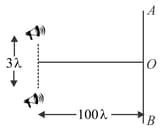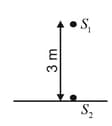Describe the Quencke's tube
Important Questions on Sound
Two identical coherent sound sources and with frequency are apart. An observer standing equidistant from the source and at a perpendicular distance of from the line hears maximum sound intensity.
When he moves parallel to , the sound intensity varies and is a minimum when he comes directly in front of one of the two sources. Then, a possible value of is close to (the speed of sound is )
(velocity of sound
In Quincke's tube experiment, the difference in amplitudes is due to
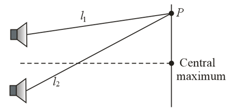
Two loudspeakers and driven by a common oscillator and amplifier are arranged as shown. The frequency of the oscillator is gradually increased from zero and the detector at records a series of maxima and minima. If the speed of sound is , then the frequency at which the first maximum is observed is
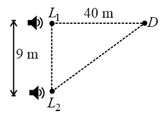
Two waves of same frequency have amplitudes . These waves are made to superpose in the same direction. The ratio of maximum intensity to minimum intensity at various places will be
Statement-2: If two waves of amplitudes and superpose, the maximum amplitude of the resultant wave .
and are the two coherent sources of sound having no initial phase difference. The velocity of sound is . No maxima will be formed on the line passing through and perpendicular to the line joining and , if the frequency of both the sources is
The sound signal is sent through a composite tube as shown in the figure. The radius of the semicircular portion of the tube is . Speed of sound in air is . The source of sound is capable of giving varied frequencies in the range of and (where ). If is an integer then frequency for maximum intensity is given by
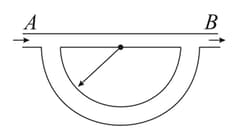
When beats are produced by progressive waves having the same amplitude and nearly the same frequency, the maximum loudness heard is
Represent the union of two sets by Venn diagram for each of the following.
is a prime number between and
is an odd number between and
A sound wave of frequency is travelling with speed .
Find the change in phase at a given position in interval.
Find the phase difference between two positions separated by at a particular instant.
Two speakers are placed as shown in diagram.

Mark out the correct statement(s)
loudspeakers are emitting sound waves of wavelength with an initial phase difference of . At what minimum distance from on line will one hear maxima?
